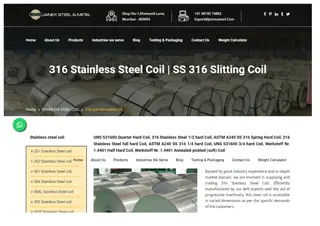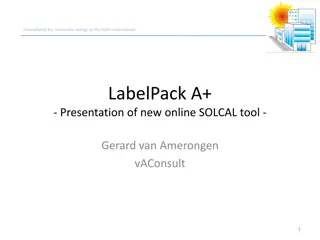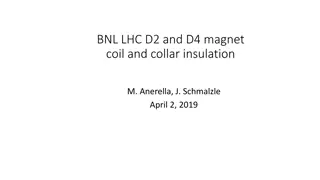Key Safety Instructions for Open Coil Heaters in Industrial Sites
Open coil heaters, also known as resistance wire heaters, are a type of electric heating element commonly used in various industrial and commercial applications. Their simple yet efficient design makes them a popular choice for processes requiring direct and intense heat. This blog will provide an in-depth look at open coil heaters, including their construction, operation, benefits, and applications.
- #OpenCoilHeaters
- #IndustrialSafety
- #SafetyFirst
- #HeaterSafety
- #EquipmentSafety
- #WorkplaceSafety
- #IndustrialMaintenance
- #SafeOperation
- #HeaterMaintenance
- #IndustrialHeating
- #SafetyProtocols
- #IndustrialEquipment
- #SafetyTraining
- #PreventiveMaintenance
Download Presentation

Please find below an Image/Link to download the presentation.
The content on the website is provided AS IS for your information and personal use only. It may not be sold, licensed, or shared on other websites without obtaining consent from the author. Download presentation by click this link. If you encounter any issues during the download, it is possible that the publisher has removed the file from their server.
E N D
Presentation Transcript
SAFETY TIPS FOR OPERATING OPEN COIL HEATERS IN INDUSTRIAL ENVIRONMENTS!
Operating open coil heaters in industrial environments requires demanding attention to safety protocols and best practices. These heaters, known for their efficiency and rapid heating capabilities, are widely used in various industries such as manufacturing, chemical processing, and metalworking. However, their powerful heating elements also pose significant risks if not handled properly. This article aims to provide comprehensive safety tips to ensure safe operation and maintenance of these heaters in industrial settings.
WHAT ARE OPEN COIL HEATERS? These are heating elements where the coils are exposed directly to the air or other gasses. They are commonly used in air heating applications due to their quick heat-up time and efficient energy transfer. Unlike enclosed coil heaters, These heaters allow for direct contact with the heating element, making them highly effective but also potentially dangerous if not used correctly. Importance of Safety in Industrial Settings In industrial environments, safety is paramount. Mishandling or improper maintenance of equipment like coil heaters can lead to severe injuries, equipment damage, and even catastrophic accidents. Ensuring that all personnel are well-trained and aware of safety protocols can mitigate these risks significantly.
UNDERSTANDING THE RISKS Before delving into safety tips, it s crucial to understand the specific risks associated with open coil heaters: Electric Shock: Since the coils are exposed, there's a higher risk of electric shock, especially if the heater is not properly insulated. Fire Hazards: Open coil heaters can ignite flammable materials if they come into contact with the hot coils. Burn Injuries: Direct contact with the heating element can cause severe burns. Equipment Damage: Overheating or improper use can lead to equipment failure and costly repairs.
GENERAL SAFETY GUIDELINES 1. Proper Installation Ensuring that the open coil heater is installed correctly is the first step in maintaining a safe environment. Follow the manufacturer s instructions meticulously, and if in doubt, consult with a professional. Proper installation includes: Correct Wiring: Ensure that all electrical connections are secure and conform to local electrical codes. Adequate Spacing: Install the heater with sufficient clearance from walls, ceilings, and other equipment to prevent overheating. Ventilation: Ensure proper ventilation to avoid overheating and maintain air quality.
2. Regular Maintenance Regular maintenance is essential to ensure the safe operations . This includes: Inspection: Periodically inspect the heating elements and connections for signs of wear, corrosion, or damage. Cleaning: Keep the heater and surrounding area free from dust, debris, and flammable materials. Testing: Regularly test the heater s performance and safety features, such as thermal cutoffs and emergency shutoffs.
3. Training and Education All personnel who operate or work near coil heaters should be adequately trained. This training should cover: Basic Operation: Understanding how to operate the heater safely. Emergency Procedures: Knowing what to do in case of an emergency, such as a fire or electrical failure. Maintenance Protocols: Training on how to perform basic maintenance tasks and recognize potential issues.
CONCLUSION Operating coil heaters in industrial environments comes with inherent risks, but these can be effectively managed through proper installation, regular maintenance, comprehensive training, and adherence to safety protocols. By understanding the specific risks and implementing the safety tips outlined in this article, industrial facilities can use these heaters safely and efficiently. Continuous improvement in technology and strict compliance with regulatory standards further enhance the safety and reliability of these essential heating devices.























